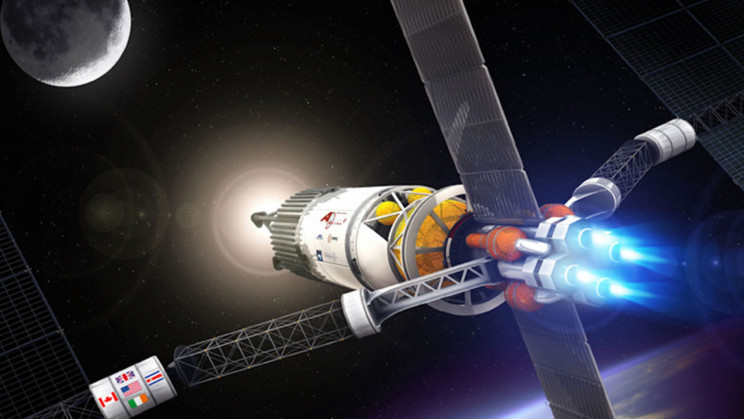Plasma-based thrusters are considered a potential form of spacecraft propulsion. These engines font take up too much energy and although they cannot have a lot of velocity due to low energy consumption, they don’t need to be very high due to no air friction in space. With stable acceleration, they may reach higher velocity.
Also, the emissions of the engine are called “quasi-neutral”. It means that simple ion-electron recombination in the exhaust can be used to extinguish the exhaust plume, removing the need for an electron gun.
Still, the Variable Specific Impulse Magnetoplasma Rocke (VASIMR) VX-200 engine requires 200 kW electrical power to produce 1.12 pounds (5 N) of thrust or 40 kW/N. This huge energy supply could be provided by fission reactors, but it would make the engine too heavy to be sent to space even.
Also, the plasma can burn up the walls of the container over time as well. These engines are better functional when in space, but they do nothing to offset the orbit expense of chemical rockets.
European Space Agency, Iranian Space Agency, and, NASA are all using such engines.
In 2011, NASA partnered with Busek to launch the first Hall-effect thruster onboard the Tacsat-2 satellite. They are also in use on the NASA Dawn space probe.
Now there is an innovation in the field. A team of Chinese engineers started working on a microwave thruster. This engine will be able to work in Earth’s atmosphere with comparable efficiency and thrust to that of conventional jet engines.
This is being done at the Technical Sciences at Wuhan University by using air and electricity instead of regular xenon.
They used a flattened waveguide (a rectangular metal tube) through which the microwaves are focused. Generated by a specially designed 1KW, 2.45-Gh magnetron, the microwaves are sent down the guide that tapers down to half its initial size as it approaches the plasma, and then expands again.
A quartz tube is also placed in a hole in the waveguide at its narrowest point. Air is forced through this tube, then passes through a small section of the waveguide, and then exits the other end of the quartz tube.
As air enters the tube, it passes over electrodes that are subject to a very high field. This treatment strips electrons off some of the air/gas atoms (mostly nitrogen and oxygen), which creates a low-temperature and low-pressure plasma. Air pressure from the device’s blower at the entry to the tube then ushes the plasma further up the tube until it enters the waveguide.
Once the plasma is in the waveguide, the charged particles start to oscillate within the microwave field — causing rapid heating. In doing so, the soup of atoms, ions, and electrons collide with one another frequently, spreading the energy from the ions and electrons to the neutral atoms, heating the plasma rapidly.
As a result, the researchers claim that the plasma rapidly heats to well over 1,000°C. The exhausted hot plasma creates a torch-like flame as the hot gas exits the waveguide, thus generating thrust.
The concern was that the thousand-degree plasma jet produced by the engine would destroy a regular barometer.
The hollow steel ball used was filled with smaller steel beads to change its weight as and when required. At a certain weight, the thrust would be such that it would counteract the gravitational forces acting on the ball downwards on the exhaust end of the tube, allowing it to be elevated You can check out the real footage of the engine in action here.
Owing to the tests, the team found a linear relationship between propulsive force and both microwave power and airflow.
The engine can pump out a propulsive force at 400 W electrical input, and 1.45 cubic meters of air per hour, was 2.45 pounds of thrust (11 N), representing a conversion of power into thrust at a rate of 6.29 pounds of thrust (28 N)/kW.
Ars Technica points out, that “the airflows are in the region of about 15,000 times lower than those for a full-sized engine. The thrust also must scale by about four orders of magnitude (meaning the power does, too). Extrapolating linear trends over four orders of magnitude is a good way to be disappointed in life.”
People claim that the data points in the study do not show the highest microwave power levels at the highest airspeeds of the prototype. It could suggest some problems with the engine functionality.
If it is executed successfully, it can prove to be a giant leap for the quantum-leap in non-fossil fuel-powered aviation propulsion.

